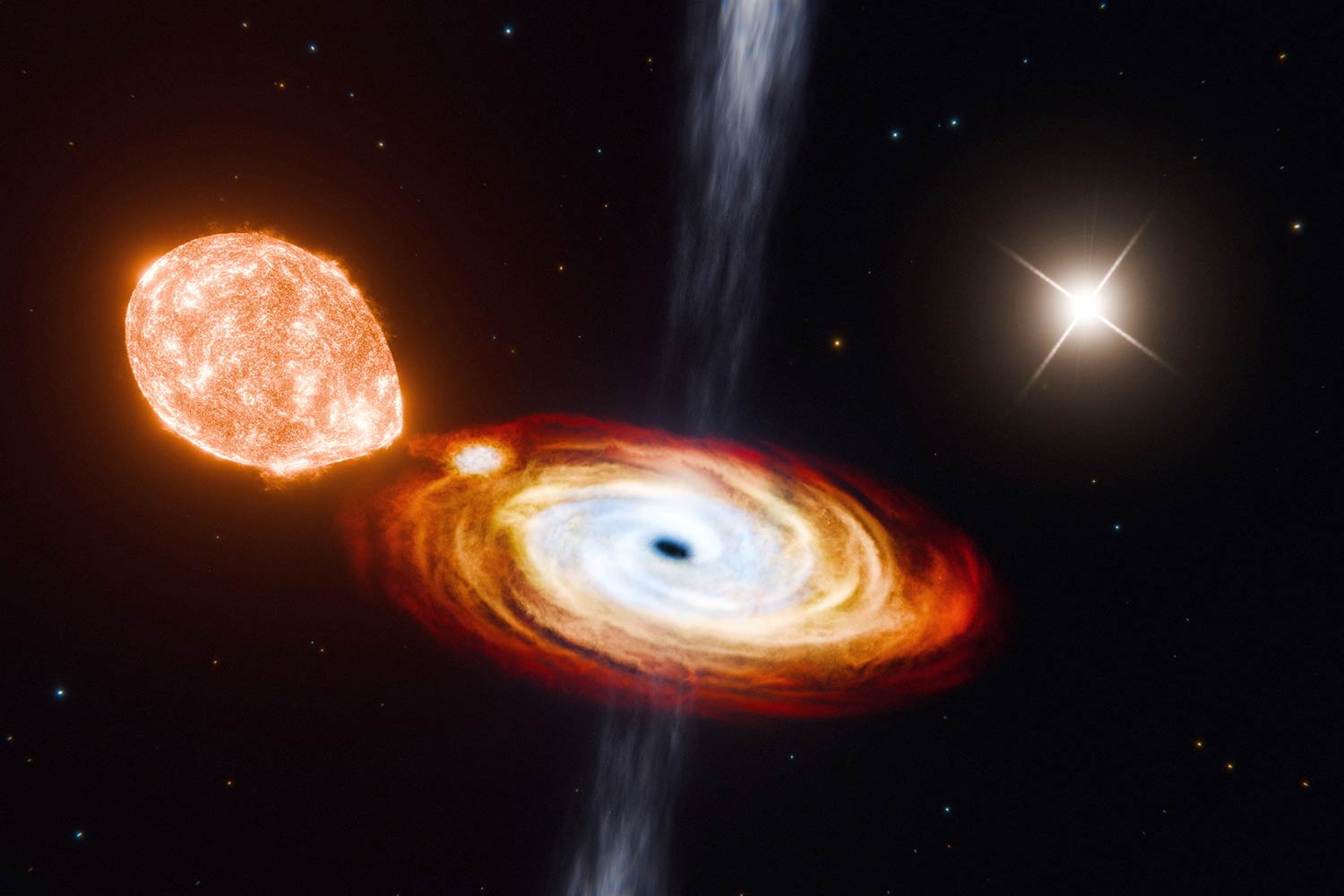On the coronary heart of our Milky Manner galaxy lurks a supermassive black gap about 4 million occasions the mass of the solar, referred to as Sagittarius A*. In reality, these objects, which improve in mass over time by consuming materials that wanders too shut, reside on the centre of most galaxies.
However since Nasa’s James Webb House Telescope got here on-line in 2022, astronomers have been stunned to seek out supermassive black holes inhabiting the early universe — sooner than they’d thought attainable contemplating the time wanted to collect such nice mass. New observations of 1 such primordial black gap is providing perception into how this may increasingly have occurred — by way of episodes of supercharged development.
Black holes are extraordinarily dense objects with gravity so sturdy that not even gentle can escape. With their immense gravitational pull, they develop in mass by sucking in materials similar to fuel, mud and stars unlucky sufficient to stray close by.
“The existence of supermassive black holes within the early universe challenges our present fashions of black gap formation and development,” mentioned astronomer Hyewon Suh of the Worldwide Gemini Observatory in Hawaii and the US Nationwide Science Basis’s NOIRLab, lead writer of the examine printed within the journal Nature Astronomy.
The brand new Webb observations contain a supermassive black gap referred to as LID-568 that existed when the cosmos was about 11% its present age — about 1.5 billion years after the Huge Bang occasion 13.8 billion years in the past that initiated the universe. LID-568 has a mass about 10 million occasions larger than the solar, so 2-1/2 occasions that of Sagittarius A*. The researchers haven’t but decided the mass of its residence galaxy.
LID-568 was noticed gaining mass at a tempo sooner than beforehand thought attainable. Webb confirmed that, primarily based on its noticed energetic output, LID-568 seemed to be consuming infalling materials — generally known as accretion — at greater than 40 occasions the hypothesised most, referred to as the Eddington restrict, for such exercise.
Eddington restrict
“The Eddington restrict is a theoretical restrict for the utmost vitality output the black gap can produce by way of the accretion course of. This theoretical restrict assumes that the outward drive from the radiation produced through the accretion course of balances the gravity of the infalling materials,” mentioned astronomer and examine co-author Julia Scharwächter of the Gemini Observatory and NOIRLab.
These primordial black holes are thought to have originated in considered one of two methods, both following the explosive dying of the universe’s first era of stars or by way of the collapse of enormous clouds of fuel current within the early universe.
Learn: Black gap picture marks ‘breakthrough for humanity’
“The invention of LID-568 means that a good portion of mass development can happen throughout a single episode of speedy accretion. This might assist clarify how supermassive black holes shaped so early within the universe, no matter how they originated,” Suh mentioned.
“Till now, we now have lacked observational affirmation of how these black holes might develop so rapidly within the early universe,” Suh added.

A key signal of a rising supermassive black gap is emission of X-rays, high-energy electromagnetic radiation with very brief wavelengths. Materials swirling round a supermassive black gap earlier than it’s consumed is superheated and glows strongly in X-ray wavelengths. The researchers first noticed LID-568 utilizing Nasa’s Chandra X-ray Observatory after which studied it extra intently utilizing Webb’s infrared observational capabilities.
The Webb observations recommend the existence of some kind of mechanism by way of which a black gap can gobble up materials at a sooner tempo than beforehand believed attainable.
Learn: World’s first wood satellite tv for pc heads to area
“LID-568 is outstanding as a result of its excessive development fee and the truth that it exists so early within the universe,” Suh mentioned. “We don’t know but how LID-568 is ready to exceed the Eddington restrict. To analyze additional, we’d like extra knowledge, so we’re planning to conduct follow-up observations with Webb.” — Will Dunham, (c) 2024 Reuters
- Most important picture is an artist’s illustration reveals a quickly feeding black gap that’s emitting highly effective fuel outflows. Utilizing knowledge from NASA’s JWST and Chandra X-ray Observatory, a group of US Nationwide Science Basis NOIRLab astronomers have found this low-mass black gap on the centre of a galaxy simply 1.5 billion years after the Huge Bang. It’s accreting matter at an exceptional fee — over 40 occasions the theoretical restrict. Whereas brief lived, this black gap’s “feast” might assist astronomers clarify how supermassive black holes grew so rapidly within the early universe. NOIRLab/NSF/Aura/J da Silva/M Zamani
Don’t miss:
Scientists unveil first picture of black gap at centre of Milky Manner